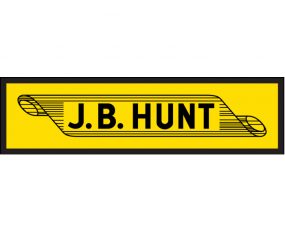
J.B. Hunt announced third quarter 2021 net earnings of $199.8m (an increase of 59.2% compared to Q3 2020) and diluted earnings per share of $1.88. Total operating revenue for the quarter was $3.14bn, an increase of 27% compared with Q3 2020. The results surpassed expectations by investment analysts, who had been looking for $1.77 per share and quarterly revenue of $3bn, according to Zacks Consensus Estimate.
All segments contributed double-digit revenue growth versus the prior year period. Truckload (JBT) revenue increased 87% from the same period in 2020 to $204m. This is the first quarter the JBT segment has generated over $200m of revenue since 2007. The company was able to accomplish this with approximately 60% fewer trucks versus that period. The company said this is due to the company’s focus on providing value-added solutions for customers, while maintaining focus on scaling into large addressable markets.
Labour challenges were the main talking point of J.B. Hunt’s third-quarter earnings call with analysts. The company stated that labour shortages across the industry in both rail and truck networks and at customer warehouses are at the core of the supply-chain fluidity challenges limiting the company’s asset utilization and capacity. John N. Roberts, President and Chief Executive Officer, said that “This year, the company has reached all-time highs in the need for company drivers in all segments”. The company has done comprehensive and exhaustive research on current compensation and benefits programs and has made adjustments to wages and benefits to try and close the gaps for both driver and non-driver positions and make J.B. Hunt an attractive employment opportunity.
Labour headwinds limited intermodal performance. Intermodal loads were 6% lower year-over-year during the third quarter. Delays in the time it takes warehouses to unload containers and get the equipment moving again was evident in the quarter. The company’s intermodal segment saw box turns fall to 5 times on average in the quarter versus 5.6x a year ago. J.B. Hunt’s boxes were turning 1.65 times each month during the second quarter. The rate was down to 1.62 this quarter. In efforts to have customers flip boxes faster, J.B. Hunt began enforcing accessorial charges for excessive delays more stringently. However, results of the initiative “have been mixed,” and even though the goal was to “move more volume and provide more capacity for customers, this was not the case in the quarter.”
The company has seen continued progress in the utilization of its 360 digital freight marketplace. Total freight transactions in the J.B. Hunt 360 marketplace increased to $518m in the third quarter 2021 compared to $358m in the prior year quarter. ICS (Integrated Capacity Solutions) revenue on the platform increased 36% to $397m versus a year ago. JBI (Intermodal) and JBT (Truckload) executed approximately $34m and $87m, respectively through the platform during the quarter.
The marketplace has been an important tool to secure capacity in the quarter. Brad Hicks, President, Highway Services and Executive Vice President, commented during the earnings call: “Our technology J.B. Hunt 360 platform continues to provide us opportunities to source and provide capacity for customers in what continues to be an extremely capacity constrained environment.”
The company stated that capacity remains tight across all channels, as evidenced by elevated spot and contract rates across all modes of transportation. Further adding to fluidity challenges is the backlog of freight off the West Coast waiting to get unloaded at the ports. “While peak season is upon us, we believe the bottlenecks on the West Coast are going to compact and even intensify further peak-season capacity needs into November and December,” Shelley Simpson, J.B. Hunt’s chief commercial officer, said on a conference call Friday to discuss the company’s third-quarter earnings. This suggests inventory replenishment will be a favourable catalyst during the first quarter of 2021.
Source: Transport Intelligence, October 19, 2021
Author: Violeta Keckarovska